 The Epithelium– the Weak Link ?
The Epithelium– the Weak Link ?
It is important to start with the Intestinal epithelium gut barrier, since, loss of integrity here begins ignition of so many physiological and psychological disorders.
I suppose you could consider it the weakest link but in some respects it’s not (“’who will vote off the weakest link”) but I consider it a remarkable piece of physiology but it’s susceptible if the potential invasion is powerful enough like an impenetrable medieval castle, if the siege army is strong with many Trebuchets, Petards and siege Onagers the walls are going to be breached somewhere.
The Intelligence of the Epithelium
As we discovered in Part 1 the entire gastrointestinal epithelium is coated with mucus, a ‘slimy’ material composed of Mucins (Glycoproteins), Inorganic salts ( i.e Table salt NaCl ), suspended in water; it is our Mucosal Firewall.
The protective purpose of Mucus is to bind to Bacteria to prevent bacterial colonization and repel damaging chemicals such as gastric acid (stomach hydrochloric acid).
In addition, the IEC (Intestinal Epithelial Cells ) secrete a bicarbonate ion on their Apical faces ( cell apex that face the lumen, the hollow part of the tract ) to maintain a neutral PH ( even though the lumen itself is highly acidic ).
Regulation of smooth muscle within the epithelium is achieved by Prostaglandins ( a fatty acid compound ) which are synthesized within the mucosa from Arachidonic acid ( an omega 6 fatty acid) by an enzyme called Cyclooxygenase providing Cytoprotection ( pertaining to chemicals used to protect cells from harmful agents) and to stimulate mucus and bicarbonate secretion.
Additional epithelial protection is afforded by Goblet cells scattered along the epithelial gut wall that not only secrete the protective mucus, but also produce Trefoil proteins ( small peptides ) that coat the IEC apical face protecting the epithelium from a range of toxins and drugs, playing a part in IEC repair.
Furthermore, Nitric acid also plays in role in mucosal integrity when secreted by IECs in response to ( for example ) a lumen dwelling pathogen Giardia Lamblia. Within the Crypts (shown in the diagram below) Paneth cells ( epithelial granulocytes- white blood cells containing secretory granules in its cytoplasm ) secrete antimicrobial peptides (AMPs) known as Alpha-defensins (Lysozymes) and Reg3 gamma (Regenerating islet-derived proteins), both used for pathogenic defense.
We also mentioned in a previous article Secretory immunoglobulin A ( sigA ) which are secreted by Plasma cells located in the Lamina Propria ( inside the body) and transported into the lumen ( outside of the body) by IECs which have the property to block epithelial receptors preventing pathogenic attachment.
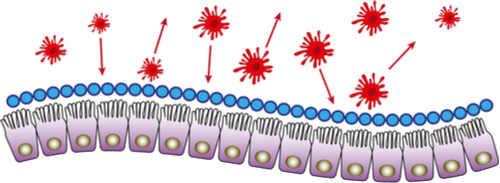

How Bacteria Interacts with your Epithelium
In terms of the chemical crosstalk between the IECs and the microbiome Certain strains of E Coli, a human fecal isolate and probiotic strain enhances protein expression within the epithelium thus enhancing barrier integrity.
Metabolites secreted by beneficial bacteria Bifidobacterium infantis also provide barrier integrity. Lactobacillus plantarum regulate barrier proteins providing protective effects by preventing and even reversing adverse effects from pathogens. Strains of Bifidobacterium lactis also provide protective effects.
These protective effects are in part due to the competition that occurs between probiotic beneficial bacteria and potentially pathogenic commensal bacteria for nutrients required for growth and adhesion.
In addition the metabolites secreted by the probiotic bacteria go on to strengthen the Tight junction (TJ) of the epithelium through a cell signaling pathway that must be initiated by the probiotic bacteria before treatment from metabolites secreted from pathogens.
One such bacterial strain that achieves this is a metabolite secreted by Salmonella enterica serovar Typhimurium ( However this strain itself can cause pathogenic harm). Lactobacillus acidophilus and Streptococcus thermophilus assist infected IECs by treating them with protein inhibition to protect against TJ disruption.
Additional protection against barrier dysfunction is also provided by commensal bacteria species Bacteroides thetaiotaomicron, Lactobacillus rhamnosus and Bifidobacterium Longum.
The epithelial cells are placed together in ‘Tight Junctions’ referred to as Zonula Occludens ( Don’t you just love ‘biology-speak’, which refers to a complex of proteins that are the building blocks of the gut wall barrier).
The purpose of the gut wall barrier is to be semi-permeable, allowing water, electrolytes, nutrients IN ( small stuff and solutes ), and to keep pathogenic microbes,toxins,antigens OUT ( Big stuff ).
We saw in Part one, the Enterocytes that are responsible for nutrient absorption, but these enterocytes are actually Intestinal epithelial cells ( IEC) that have a very short life span, in fact 10 * 11 power number of cells are replaced daily and the entire epithelium is replaced within 2-6 days.
To ensure epithelial contiguity and gut barrier function this cell replacement process is a highly complex process of orchestrated events. Since replacement cells are created from stem cells sitting in the crypts new cells need to make there way from the bottom to the top of the Villi as explained in Part 1. This process is explained in the next section.
Cell Differentiation
We know that cell proliferation and differentiation ( I use this term because stem cells are virgin undifferentiated cells until the body produces specific differentiated cells for particular organs or tissue ) relies on a series of feedback loops involved in a pathway referred to as the Wnt Pathway that balances the opposing processes of proliferation and differentiation.
This pathway is regulatory and in this context it is ‘Canonical’ ( a calculated order of events ) due to the crucial nature of the coordinated timing between the shedding of an old cell and the replacement of the new cell while maintaining epithelial integrity at all times.
This is a highly ingenious design and its like repairing the walls of our medieval castle while it’s being sieged. If this replacement process is compromised this could be a way in through the tight junctions of the gut barrier.
It has also been suggested by Biochemical scientist Colston that a deficiency ( caused by Toxic ingestion ) in Calcitriol ( the active form of Vitamin D3 ( 1,25 dihydroxyvitamin D3 ) disrupts the elegant enterocyte replacement cycle leading to a depleted enterocyte renewal, causing excess wearing of the brush borders leading to Celiac disease.
Furthermore, Calcitriol deficiency can also lead to a deficiency or complete absence of Heparin Sulphate potentially causing Colitis and Crohn’s disease. Colston wrote : ‘ Taken together these findings suggest that the major function of calcitriol on the small intestine is to promote differentiation of immature enterocytes in the crypts and at the base of the villi’.

Causes of Epithelial breach -Toxins
Despite the bodies considerable efforts to maintain barrier integrity it can be breached. The ingestion of NSAID ( Nonsteroidal anti-inflammatory drugs) such as Indomethacin, Aspirin and others do their best to destroy one barrier maintenance task by inhibiting Prostaglandin synthesis.
Gastrointestinal infection from parasite such as Cryptosporidium Parvum, and Toxins secreted from Bacteroides Fragilis also put pressure on wall integrity.
One of the protein families that are part of the tight junction membrane are called Claudins and it is known that specifically Claudin 3 and 4 are potential targets for Clostridia toxins ( Parfringens enterotoxin ) that bind to the Claudin 3/4 proteins increasing tight junction permeability.
As we mentioned above the Epithelial Tight junctions (TJ) allow some substances in, and bar the passage of others, so the TJ are fairly dynamic insofar as they are opening and closing all of the time to a variety of cellular pathways that can potentially be usurped by pathogens.
One of these pathways concern the ‘Zonulin’ pathway which bacteria such as Vibrio Cholerae exploit by secreting a variety of toxins including ‘Zonula Occludens’ ( an enterotoxin ). This toxin binds to the apical membrane receptors on the enterocyte creating an intracellular pathway increasing TJ permeability to the extent of a gut barrier breach.
The article ‘Microbiome and the Immune system’ we discuss the Inflammation first responders, the voracious phagocyte the Neutrophil. During a less serious inflammatory response like getting a cold, Neutrophil activity across the gut barrier is not a problem. However, a more serious inflammatory response, especially if it is not quelled, and is continuous, neutrophils have virtually VIP access around the body, except for the central nervous system,brain and the spinal cord which are super high security areas. When a neutrophil ‘army’ impales the tight junctions crossing the gut barrier they can potentially induce significant damage to barrier function.

Causes of Epithelial breach – Stress
Stress in large doses is a real ’tissue killer’ and involves modulation of many hormones, cytokine signaling and significant neuro transmission. It also decreases mucosal blood flow potentially compromising integrity of the mucosal firewall. We will cover this subject in a little more detail in the article ‘Microbiome and the Gut-Brain axis’.

Causes of Epithelial breach : Diet induced Gut Dysbiosis
An average poor diet of processed and fast food which were never designed for human consumption will over time cause physiological dysfunction. Why ?, because many ingredients are poisonous to the body. Let’s take french fries that the fast food industry prepare and look at the ingredients :
- Potatoes
- Canola Oil

- Soybean oil
- Hydrogenated soy oil
- Natural beef flavor
- Hydrolzed wheat
- Hydrolyzed milk
- Citric acid ( antioxidant to preserve the oil from spoiling)
- Dimethyl polysiloxane ( anti-foaming agent to prevent oil from splashing )
- Dextrose ( coloring agent to maintain a golden brown color of the fried product)
- Sodium acid pyrophosphate ( prevents potatoes from turning to a grey color )
- Salt
- TBHQ -Tert Butyhydroquinone ( antioxidant used to preserve oil freshness, chemically it is a preservative which is in the form of butane )

Your body is already a complex chemical factory regulated and managed by complex chemically driven bacterial colonies, and a multiplicity of host chemical pathways, so to add more chemical substances is a complete disaster waiting to happen.. We know that diet and nutritional status is the foremost important modifiable determinant of human health. Both the microbiome and host mammalian gene expression are altered by food and nutritional supplementation daily.
The situation is further complicated by other environmental exposures to toxic substances ( last count in the US = 79,000). and the Phenotype (observable characteristic taken from a known Genotype and its interaction with its environment), and Genotype (description of genes that are responsible for physical expression and characteristic traits ) of each individual. So to emulate a typical human for testing purposes is almost impossible, however, given the disastrous statistics on human health today, and poor diet, a stereotype has emerged; a good proportion of the planet’s population are chronically sick; a very sick,drugged poisoned society.
As the eminent Dr Bergman points out, that if we were to witness a herd of buffalo or gazelle, where half were sick, drugged or poisoned their species would not last very long, and eventually they would probably become extinct.
Is this what we want for society? I agree it is the perfect solution for population control; no need for world wars anymore, we are eradicating ourselves perfectly with WME (Weapons of Mass Extinction) like drugs and toxic food.
However, given the choice and our own innate need to survive, we would not want to live a painful miserable existence toward an eventual premature demise.
 What’s the Solution?
What’s the Solution?
To stop this tsunami of self administered annihilation we must be prudent toward what to avoid and what to consume. This is easier said than done, since since most fresh produce unless it’s organic (but even then there is no guarantee that some airborne pesticide has not corrupted the crop) is contaminated with a toxic or antibiotic pesticide/herbicide etc.
However, humans are not eggs, if we are relatively healthy and our livers are functioning a few ingested toxins is not a big deal and our livers can detoxify them. I would also go so far to voice the statement made by Dr Mercola who said
“If you abuse your body by 5%/day by eating a treat that is nutritionless your body is not going to collapse.”

However, a disturbing statistic today, concerns sugar consumption. A 100 years ago the annual sugar consumption was 3-4 pounds (approx 1.3-1.8 kilos)/person. Now it is in the range of 150 pounds ( 68 kilos)/person. It is no wonder that commensal bacterial species like Bacteroides fragilis and Bacteroides melaninogenicus are feasting daily on their favourite food, glucose, causing them to overgrow to unhealthy levels.
The processed food industry use Sodium citrate as a food additive usually as a flavor enhancer (as in Club Soda) or as a preservative, or as an emulsifier (thickening agent) in ice cream, jams, milk powders, processed cheese ( thanks to James Kraft who, in 1916, patented the first American cheese slice, using Sodium Phosphate to maintain a mixture of water and fat when the cheese is melted, but today Sodium citrate is used ), soda pop and wine.
The problem is that citrates chelate free calcium which is a known process that disrupts Tight Junction ( TJ ) gut barrier integrity. Citrates also chelate Aluminium which can also travel across the gut barrier and if not dealt with can cross over our second crucial physiological barrier the Gut-Brain barrier axis.
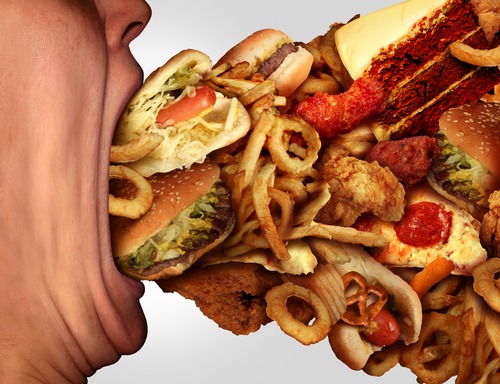
How an Unhealthy Diet affects your Microbiome
In order to evaluate dietary factors and its effect on the microbiome, an interesting study was completed where researchers implanted a humanized gut microbiome ( from a healthy adult human ) into 15 * 5-7 week old mice and documented the changes over a 12 week period that occurred within the gut when fed with diverse diets.
The microbiome changes were observed when a low fat, plant polysaccharide rich diet was switched to a high fat/high sugar ‘Western’ diet. ( The mice that were used for the experiment were Gnotobiotic, which is to say that the mice had no microbial flora ( raised in a germ free environment, giving researchers time to analyze their Genotype, and their physiologic Phenotype) and then the humanized flora was transplanted into them.
Microbial Phyla such as Firmicutes, Bacteroidetes, Actinobacteria, Proteobacteria, Verrucomicrobia, Fusobacteria and Spirochaetes are found in both mice and human gut floras but the genera and species differ, for example one genera of Firmicutes is Clostridia. It was evident that there was a significant shift in microbial communities within 1 day of switching diets from the low fat plant diet to the high fat/high sugar diet which occurred 4 weeks after initial colonization.
In the human the most common Commensal bacteria consists of :
COMMENSAL
| Bacteria Name | Phylum | Class |
| Bacteroids | Bacteroidetes | Bacteroidetes |
| Peptococcus | Firmicutes | Clostridia |
| Staphylococcus | Firmicutes | Bacilli |
| Streptococcus | Firmicutes | Bacilli |
| Enterobacteria | Proteobacteria | gammaProteobacteria |
| Fuzobacteria | Fuzobacteria | |
| Eubacteria, | Firmicutes | Clostridia |
| Spirochaetaceae | ||
| Spirillaceae | Proteobacteria | betaProteobacteria |
| Catenobacteria |
As a comparison the following table displays dominate phylum/species of our Beneficial bacteria :
BENEFICIAL
| Bacteria Name | Phylum | Class | Species |
| Bifidobacteria | Actinobacteria | Actinobacteria | Bifidium |
| Lactobacillus | Firmicutes | Bacilli | Acidophilus |
| Lactobacillus | Firmicutes | Bacilli | Plantarum |
| Lactobacillus | Firmicutes | Bacilli | Rhamnosus |
| Propionobacterium | Actinobacteria | Actinobacteria | |
| Peptostreptococcus | Firmicutes | Clostridia | |
| Enterocuccus | Firmicutes | Bacilli |
It is of interest to note the bacterial Phylum Firmicutes is so dominant in both Commensal (opportunistic) and Beneficial colonies.
 After the mice were fed the high fat/high sugar diet the Firmicutes phylum ( Erysipelotichi class, Clostridium innocuum species, Eubacterium dolichum a clostridia species and Catenibacterium mitsuokai, Bacilli class enterococcus genus) representation was increased.
After the mice were fed the high fat/high sugar diet the Firmicutes phylum ( Erysipelotichi class, Clostridium innocuum species, Eubacterium dolichum a clostridia species and Catenibacterium mitsuokai, Bacilli class enterococcus genus) representation was increased.
The study did not reveal change in the beneficial flora but these results indicate that unhealthy nutritionless diets increase the commensal flora and over a period of years of consuming such a diet would suggest the ignition of ill health.
This study proves the initial overgrowth of potentially pathogenic flora which eventually can cause a breach in the gut barrier.
It is disappointing that very little experiments have been done using humans and the microbiome..wait what was the line from Fringe ? “Someone out there is experimenting, only the whole world is their lab”, does this sound familiar? Millions of people are being prescribed multiple drugs every day.
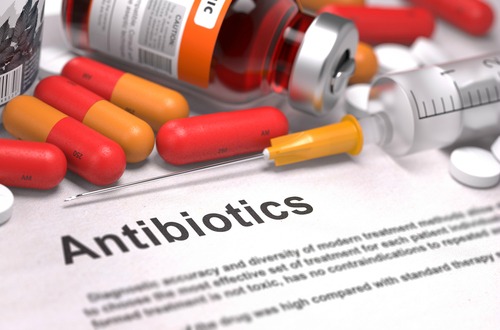
Causes of Epithelial breach – Pharmaceutical Chemicals – Antibiotics
Another culprit that can lead to abnormal flora overgrowth is the destruction of the microbiome by Antibiotics.
Having noticed that one culture of staphylococci was contaminated with a fungus and the staphylococci colonies that surrounded the fungus were destroyed Alexander Fleming in 1928 had accidentally discovered a poisonous fungal mould that killed pathogenic bacteria.
Since the mould was of the Penicillium genus he named it Penicillin, thus was born the first antibiotic. Since nobody had listened to Fleming since 1928 when he published his findings, he abandoned his discovery ( Is it not ironic that great scientists that discover something that would change medicine are ignored.
The same thing happened to Dr John Beard -we will cover this in a future article, and it is this same arrogance that is so pervasive in medicine which is why we have such a sick society).
Eventually, in the 1940s Ernst Boris chain and Edward Abraham perfected Fleming’s discovery into a drug that helped millions.
However, at this time Fleming warned the medical community that administering antibiotics would wipe out all bacteria in the gut so he recommended that all physicians prescribing antibiotics should prescribe a probiotic to reseed the beneficial flora and doctors complied for about 20 years after, than they stopped.
This practice of ignoring probiotic prescription has played a part in initiating a plethora of gut dysbiosis based diseases including autoimmune diseases that have risen to epidemic levels.
The fire has been fuelled by the administering of many other drugs that have a harmful affect on our microbiome including Tetracycline that are taken over long periods of time to ‘fight’ acne, pain killers ( Aspirin, Ibuprofen, Tylenol, Advil etc), steroids ( Prednizone, Cortisone ), birth control medications, sleeping pills..the list goes on and on; simply a selection to choose from on how you decide to wreck your health.

Causes of Epithelial breach – Genetically Modified (GM) Food
Another health hazard that has raised its head in recent years is Genetic modification, although this is a subject for further articles I want to mention here because it has a significant bearing on gut health.
The ‘head of the herd’ of weed/insect killers is Glyphosate the active ingredient in Monsanto’s (one the largest Biotech companies) ‘Roundup ready’ herbicide.
Apart from being a patented antibiotic, which disrupts gut function and breach our mucosal firewall.. it is estrogenic and like Citrate it has the ability to chelate Aluminum in a more sophisticated fashion by chemically building ‘Aluminium Cages’ that can breach both the TJ Gut barrier and our Gut-brain barrier, potentially adding one more casual effect toward several psychological problems like Autism.
What is ironic is that the clever biotech industry actually exploited bacteria in achieving their goals.
In 1970 biotech engineers working toward the genetic modification of plants, crops and food but had reached an impasse in their research.
That impasse involved the incredible difficulty in the transgenic process of implanting foreign DNA into other species ( the very heart of genetic modification ), and after many years of trying, an epiphany moment occurred, unfortunately for the whole world.
They stumbled on the solution, the consequences of which we are all experiencing and have been since 1990, and you might call it ‘The final solution’ ( as in Hitler’s dream to eradicate the Jewish population from the face of the earth ). The solution that became their salvation was a microbial virus.
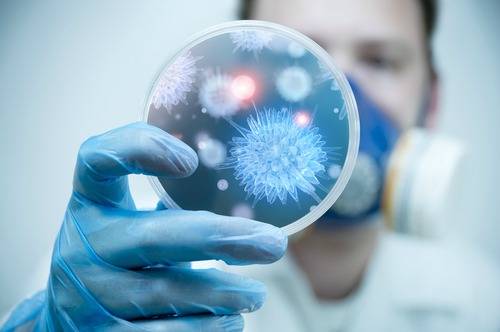
As I mentioned Biotech engineers had no idea how to splice segments of DNA and insert them in different species DNA strands until they discovered Hundreds of viral species that naturally perform this operation.
Scientists discovered that some eukaryote bacteria secrete an enzyme that is used to defend themselves against viruses to restrict their activity.
These enzymes are known as ‘Restrictive enzymes’ from the ‘Restrictive enzyme system’ mentioned in part 1.
A virus is a prolific parasite that has no means to replicate, since they are not a cellular organism; they usurp a eukaryote species of bacteria and use their resources to reproduce their offspring. In general a virus is a mere 30 gene species but they possess an ingenious ‘Cloaking device’ in order to latch onto its target.
Once attached the virus injects its own DNA into the host cell interior forcing the cell to make copies of itself and any necessary proteins.
However, if the host contains ‘restrictive enzymes’ they can cut up the foreign DNA preventing replication.
The fascinating part of these enzymes is they have the ability to recognise specific DNA sequences that they want to remove and then rejoin the spliced ‘sticky ends’ in a similar manner to the old audio tape splicing made contiguous for playback.
Now you know how the Biotech industry accomplished genetic modification. However, as we will appreciate in a future article on Genetic Modification this ‘Frankenstein’ methodology has developed huge negative consequences for us all.
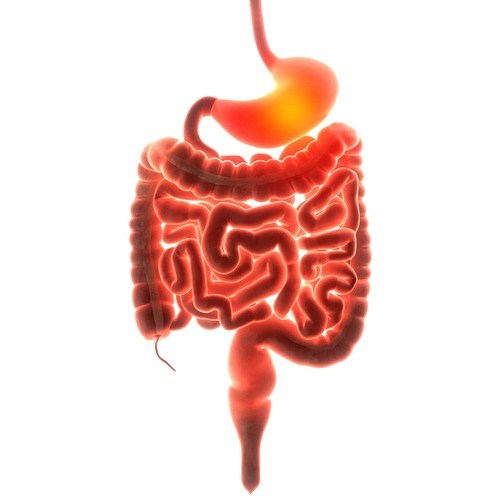
Disease caused by Gut dysbiosis
A huge amount of data has been amassed on this subject so I want to avoid duplicating the usual ‘verbiage’, so suffice to explain that body adaptation or dis-ease concerning the epithelium barrier is that once it has been breached, any undigested food particle or pathogenic bacterium can cross through into the body.
Once this occurs, and these substances get into the bloodstream, the immune system, as it is designed, will respond immediately attacking the ‘foreign invaders’ attempting to neutralise the threat.
However, since this is an abnormal occurrence, and assuming the gut balance has been disrupted already, the immune system goes into overdrive attempting to restore homeostatic conditions, but in its quest it to normalize the situation, and given certain conditions such as a barrier breach that is not fixed for a while ( a condition referred to as Leaky Gut syndrome), the immune system spins into turmoil.
The immune system’s primary tasks are to detect infection and potential harm (Recognition), contain and eliminate infection (Effector function), control activities to avoid damage to the body ( Regulation), and react immediately to known substances (Acquired immunity function).
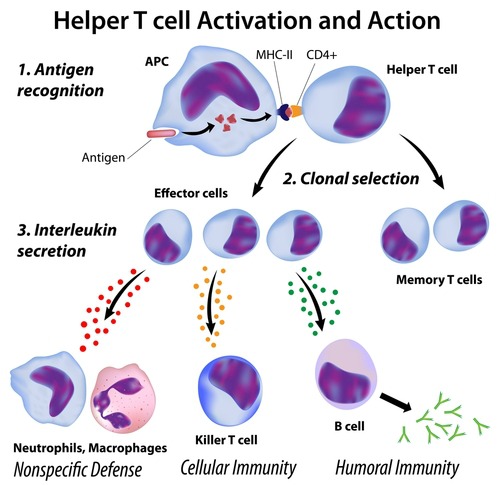
In the article ‘Microbiome and the immune system’ bacterial species Bifidobacteria activate the T Lymphocyte cells. These cells secrete a substance called Muramil Depeptide, a Peptidoglycan substance used to signal Mammalian cells.
With the assistance of the Dendritic cells, the T cells are converted into immunomodulatory cells called Regulatory T Cells ( T Regs ). The T Regs then migrate to a region of the lymphatics within the Villi called the Laminar Propria, at which point the decision to trigger an inflammatory response is made. However, if the microbiome is in chaos ( unbalanced ) this crucial decision making is disrupted, causing the immune system to migrate into chaos.
The immune system, without the normal regulatory controls begin ‘search and destroy’ missions on any other amino acid chains ( proteins ) that resemble the original molecules that breached the mucosal firewall.
This resultant activity is referred to as ‘Molecular Mimicry’. Depending on the protein amino acid chains the immune system can potentially attack any ‘like’ proteins that make up any organ so in its ‘wisdom’, conventional medicine has labeled these various conditions as:
- Type 1 Diabetes (Insulin producing cells on the pancreas) – This is actually a birth defect
- Hashimoto’s Disease (The Immune system antibodies slowly destroy the thyroid hormone producing cells)
- Graves’ Disease: antibodies stimulate the thyroid gland to release excessive amount of the thyroid hormone ( Hyperthyroidism )
- Inflammatory Bowel (IBD) ( intestinal lining )
- Multiple sclerosis ( nerve cells, but the damage migrates to the brain neurons)
As for Multiple Sclerosis, Dr Swank’s research claimed that it was excessive protein that allowed this condition to breach the gut-brain barrier and compiled a dietary treatment to reverse this condition. In reality, its diet that can reverse all autoimmune conditions (the ultimate goal with diet intervention is to restore microbiome balance) and improve Type 1 diabetes (but not reverse it), Psoriasis ( skin), Lupus ( overall body tissue ), allergies ( food for a future article), Celiac ( gluten intolerance driven by calcitriol depletion leading to villi brush border malfunction ).
According to conventional medicine the cause of autoimmune conditions are unknown and it may be hereditary
Well they are partially correct, if a dysbiotic microbiome is inherited by a child from its mother and never corrected it is hereditary but how can they make such a statement if they don’t know what causes the condition in the first place….yes I believe Elvis has left the building…Who is driving the bus?

Who is driving the bus ?
Before the microbiome became ‘front page news’ the old biology and our mammalian genes and pathways were the target of the arsenal of pharmaceuticals, but in the new biology within the paradigm shift including now the microbiome we have come to realize the fickle behaviour of modern medicine.
If one considers that the old target was made up a mere 1% of our cells, while the new target now constitutes 99% of our microbial neighbor’s cells, creating a new ‘playing field’ that has grown exponentially.
Now the pharmaceutical industry is having a field day designing new drugs to ‘fix’ our bacterial cells and pathways. Instead of some 250,000 drugs to manage 1% of our mammalian cells, the number of drugs to manage 99% of our symbiotic microbial cells will be innumerable and I can see the dollar symbols in the eyes of the pharma executives.
Dr Rodney Dietert talks about the ‘superorganism’ and asks the question ‘ Who is driving the bus ?’, referring to the functional relationship between us and our microbial symbiotes. Clearly. If our microbiota fails us we are in a world of hurt both physically and mentally so you answer the question.
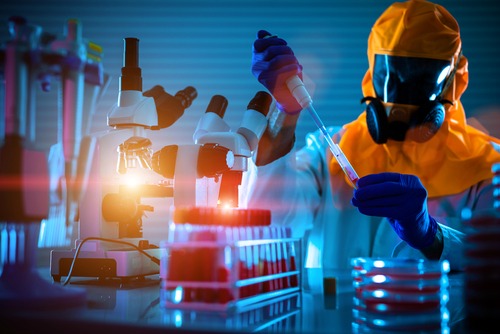
Dana Scully: Platyhelminthis are often hermaphroditic. Mulder, this is amazing.
It’s vestigial features appear to be parasitic, but it has primate physiology.
Where the hell did it come from?
Fox Mulder: I don’t know, but it looks like I’m going to have to tell Skinner that his suspect is a giant, blood-sucking worm after all.
The X-files, episode ‘The Host’
Check out the Previous Article in this series:
Author: Eric Malouin
Reviewed by Dr. John Bergman D.C.